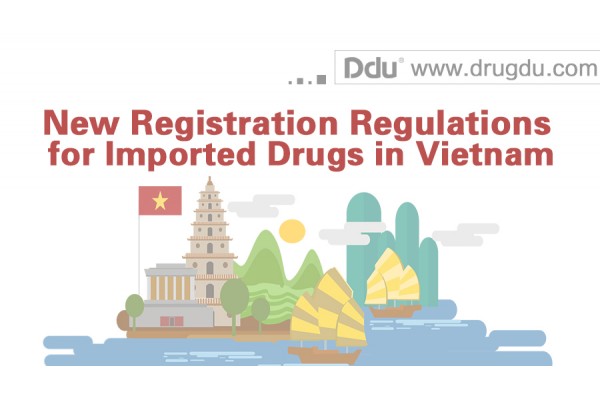Attention! New Registration Regulations for Imported Drugs in Vietnam
October 8, 2017
Source: Ddu
 1,270
1,270

The addition of “manufacturer assessment” stipulated in the Registration Regulations for Imported Drugs in Vietnam in July this year, has created some disruptions for various medical companies.
Most of companies are well aware of the fact that “manufacturer assessment” is simply another way of saying “factory inspection”. With decades of experience in registrations, Ddu has becomes very familiar with the MOH/FDA processes and one thing that we have learnt is that often, even if you have dotted all your i’s and crossed every t, you will still end up receiving a notice stating that “your information for the registration is insufficient, please apply for manufacturer assessment”. This is a major issues for most companies unless you are in possession of certificates issued by The Pharmaceutical Inspection Convention and Pharmaceutical Inspection Co-operation Scheme (PIC/S) and GMP by European countries or the prequalification from WHO.
Looking at the Registration Regulations for Imported Drugs in Vietnam, we have examined the manufacturer assessment and its specifications and this is what we found.
In essence, ‘manufacturer assessment’ refers to the process where the drug regulatory administration of importing countries (MOH in Vietnam) conduct qualification reviews on the GMP of companies, which requires manufacturer assessment documentation when manufacturers submit documents for product registration.
The specification for manufacturer assessment documentation has been listed below:
The manufacturer must provide all the following documents to proposing for evaluation the GMP compliance of factory:
a) Certificate of good manufacturing practice or Good manufacturing practice inspection report or Manufacturing license providing adequate information on dosage forms of drugs and medicinal materials issued by the competent authority of the host country; Certificate of Good Manufacturing Practice or Good Manufacturing Practice inspection Report issued by the Pharmaceutical Regulatory Authority of European Union member countries or by the Pharmaceutical Inspection Co-operation Scheme (PIC/S) (if any);
b) The master file on the manufacturing facilities in conformity with the Guideline of European Union (EU) on the overall document of production establishments or of the Pharmaceutical Inspection Co-operation Scheme (PIC/S) or of World Health Organization;
c) List of Good manufacturing practice inspections conducted by the pharmaceutical regulatory authority of the relevant home country or pharmaceutical regulatory authority of other countries within 03 years prior to the date of registration for conformity assessment of the facilities and the most recent Good manufacturing practice inspection report with the scope of inspection, including the registered drugs and medicinal materials or dosage forms of the registered drugs;
d) List of drugs with dosage forms and medicinal materials already supplied or planned to supply into Vietnam;
đ) The batch release procedures for the drugs and medicinal materials to be marketed in Vietnam;
e) Period quality monitoring reports for drugs and medicinal materials registered for marketing are sterile drugs and medicinal materials;
f) A periodic quality update report in the case that the pharmaceutical product or ingredient for registration issterile;
g) Quality manual.
To summarize the above, this is what is required:
1. A GMP compliance certificate or GMP inspection report or licence;A GMP compliance certificate or GMP inspection report granted by the DRA of a member country belonging to the EU or PIC/S (if available);
2. A site master file of the manufacturer as recommended by the EU, PIC/S or WHO;
3. A list of the on-site inspections which were carried out by the local DRA or the DRA from other countrieswithin the past 3 years.
4. A list of all the pharmaceutical products
5. A SOP for the release of pharmaceutical products
6. A periodic quality update report
7. Quality manual
There has been a growing urgency for factory inspections sweeping over countries in Southeast Asia such as Malaysia, Indonesia and Thailand, amongst others, who are members of PIC/S. The Philippines has also followed suit since its announcement of Current Good Manufacture Practices (CGMP) even though it is not a member of PIC/S yet.
It’s apparent that many countries have come to realize the importance of factory inspections and have raised the standard for market entry. Factory inspections have a great influence on the whole process of drug registration and so, we have compiled a list of suggestions for tackling the issue.
1. Submit complete information for registration
Be sure that the submitted information is updated and as comprehensive as possible to reduce the possibility of a factory inspection.
2. Be prepared for factory inspections
Vigilance ensures success. As long as you are well prepared, any issues can be readily resolved.
- Be well informed of the schedule and focus of the factory inspection and product list
- Take advantageof the opportunity to conform to the GMP standards through pre-inspection
- Place emphasison the management of software for operating habits, files standardization and management awareness.
- Reasonable distribution of work. Ensure that all management and staff members are fully informed of their dutiesto make the factory inspection go as smoothly as possible.
3. CAPA improvement
After the factory inspection has been completed, prepare a document on corrective and preventive actions (CAPA) and provide feedback to the inspection officers.
By DduRead more on
- Important Registration Regulations for Exporting Health Care Products to Vietnam March 31, 2022
- 10 Triumphant Drug Launches Of The Decade August 26, 2021
- China’s Import and Export Market Report of Rheumatoid Arthritis Drugs August 26, 2021
- China’s Import and Export Market Report of Diabetes Drugs August 25, 2021
- China’s Import and Export Market Report of Contraceptive Drugs August 24, 2021
your submission has already been received.
OK
Subscribe
Please enter a valid Email address!
Submit
The most relevant industry news & insight will be sent to you every two weeks.



